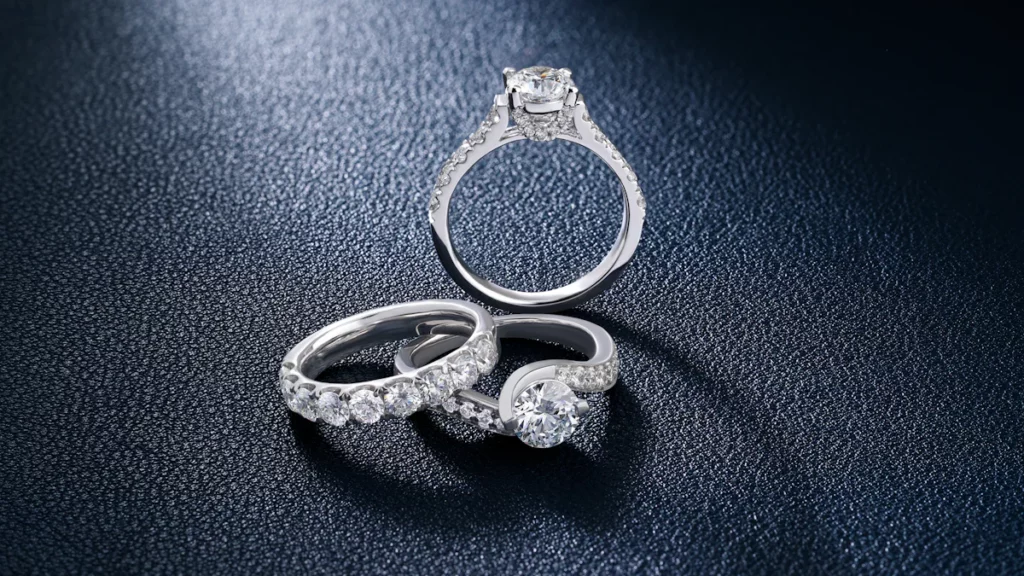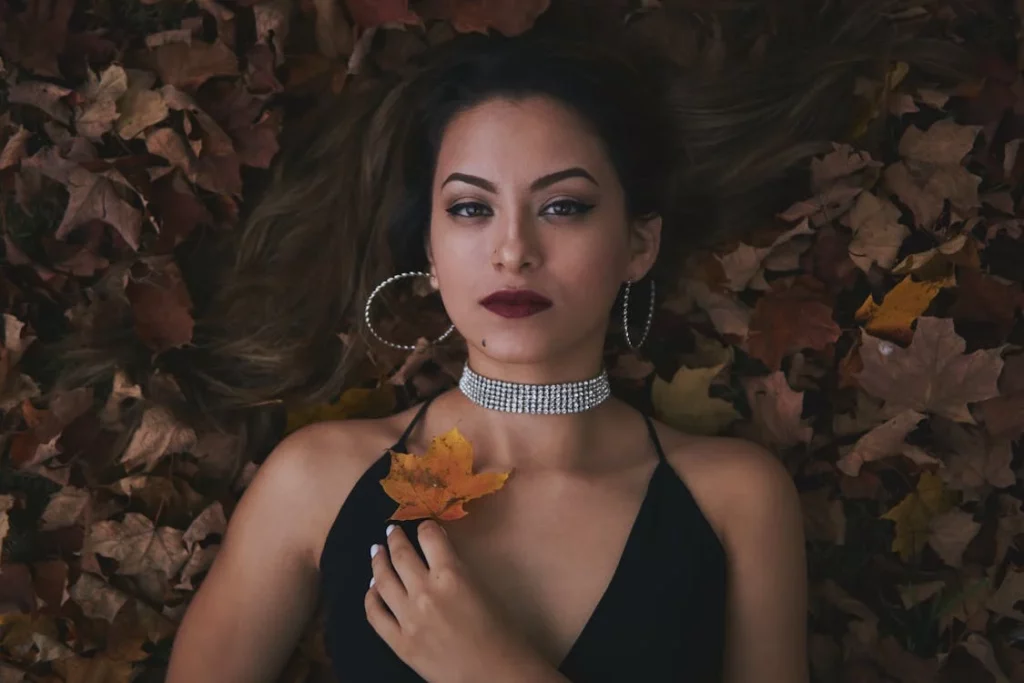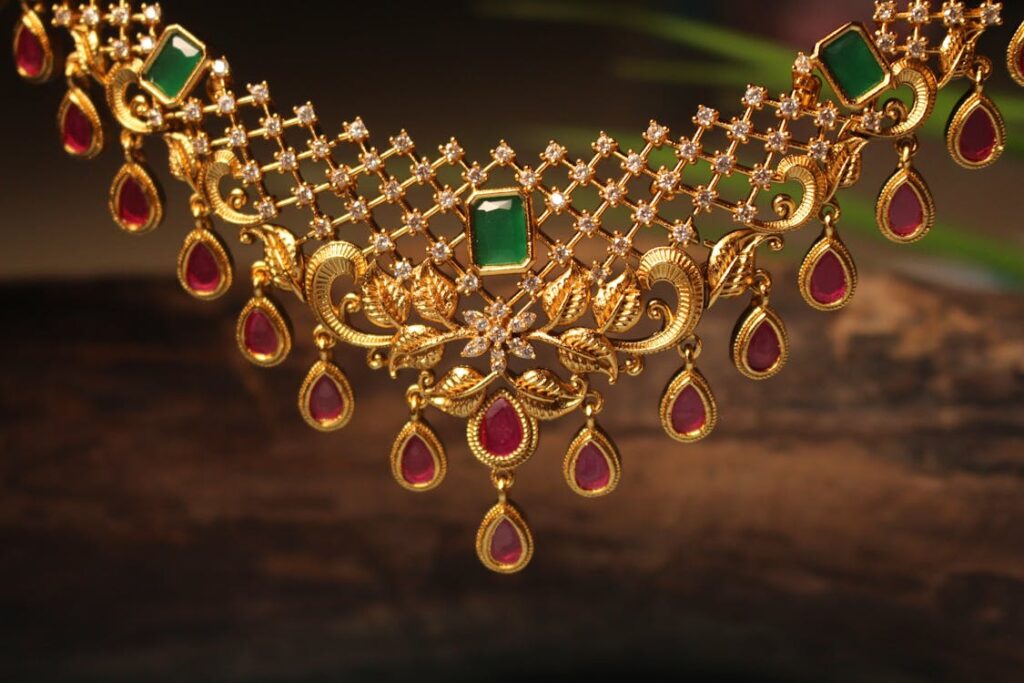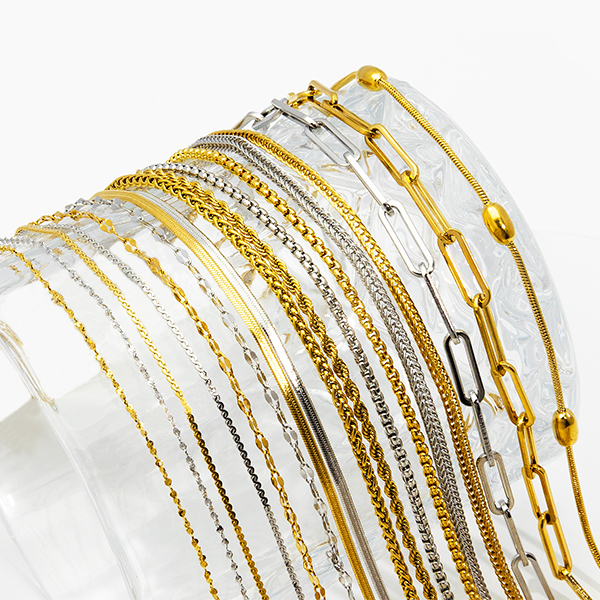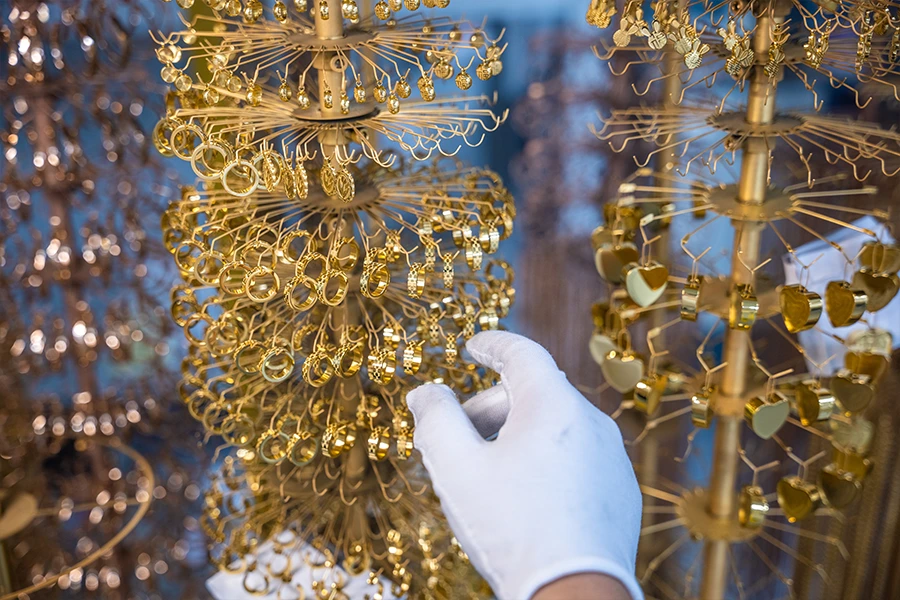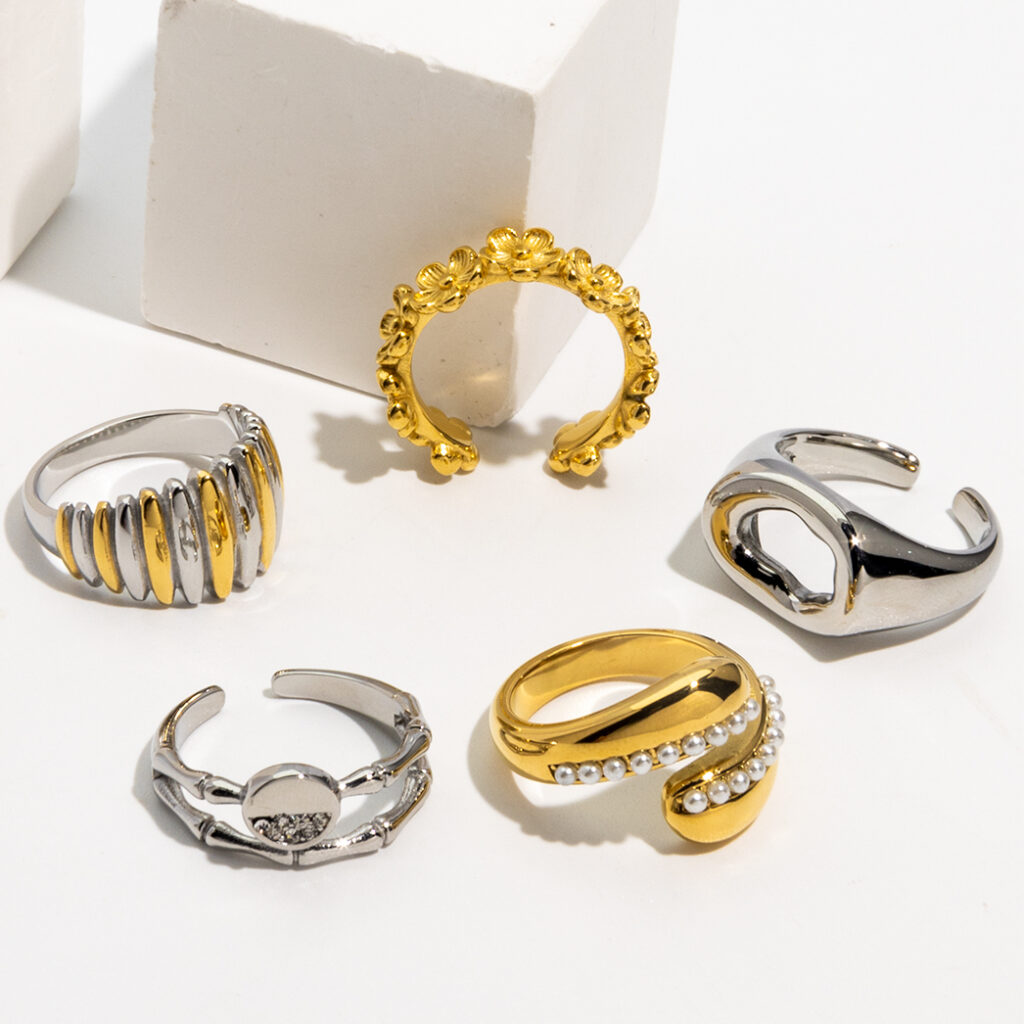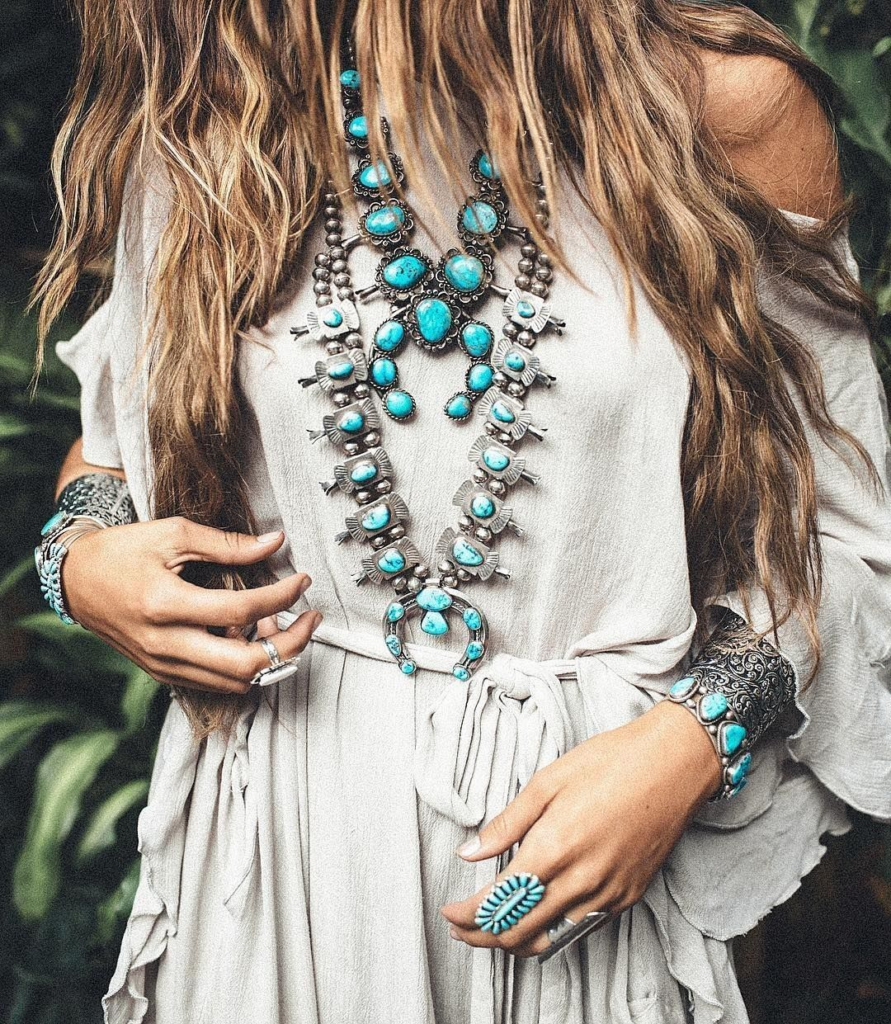
Source: Pinterest
If you are a turquoise jewelry lover, this guide is perfect for you to understand nearly everything about it, ranging from the place of origin of turquoise jewelry, the way to wear, clean and store turquoise jewelry to the price and value of it, and the way to wear turquoise necklace. Considering the budget, you may also wonder whether turquoise jewelry is expensive. Don’t worry, let’s explore the mystery of turquoise jewelry, you’ll never miss a single point of it.
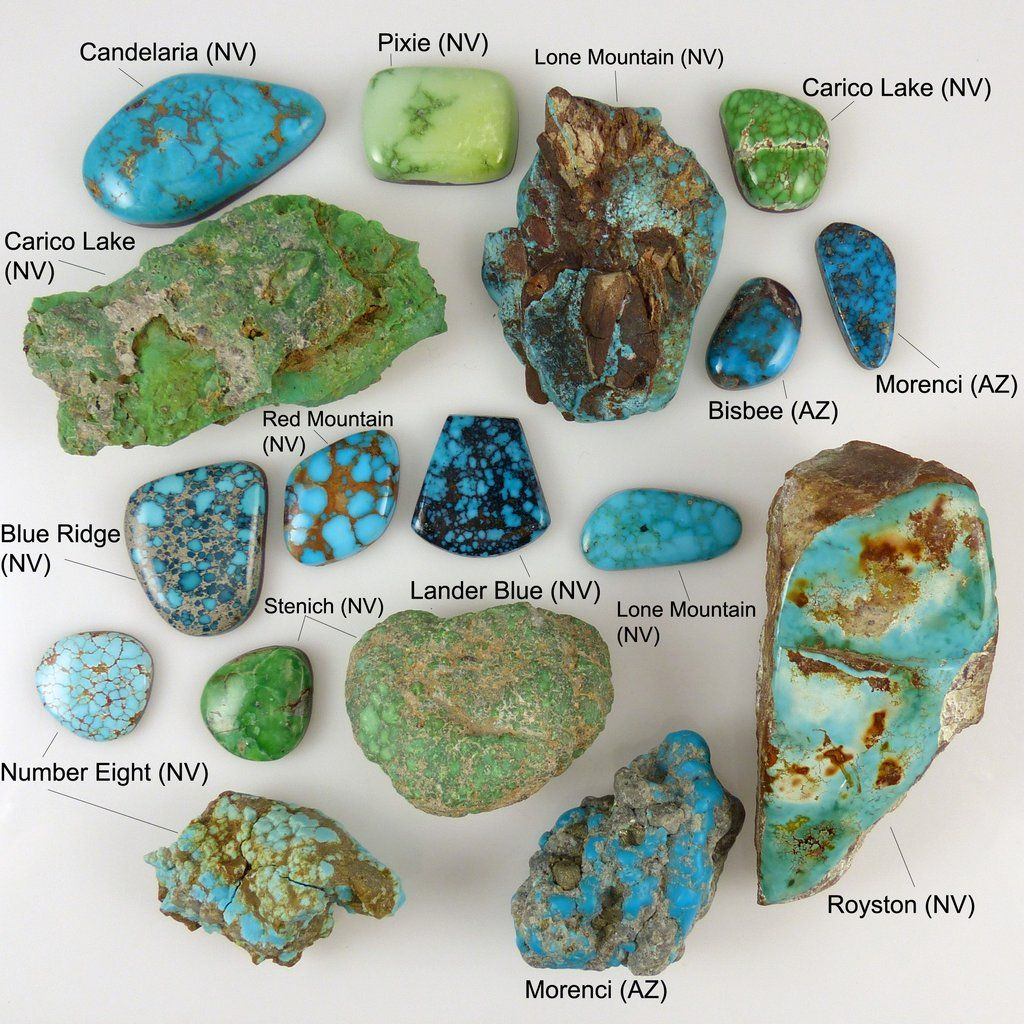
Source: Pinterest
What is Turquoise
Turquoise is a blue-green color that is derived from the mineral of the same name. It is a protective stone, strong and opaque but soothing to the touch and healing to the eye, as if carved from an azure heaven and slipped to earth.
The term turquoise dates from the 17th century and is derived from the French turquois, which means “Turkish,” because the mineral was first brought to Europe via Turkey from mines in Iran’s historical Khorasan province (Persia) and Afghanistan. The first recorded use of turquoise as a color name in English was in 1573. For thousands of years, turquoise has spanned all cultures, prized as a symbol of wisdom, nobility, and the power of immortality. As a result, turquoise was revered in its adornment and for its multiple functions.
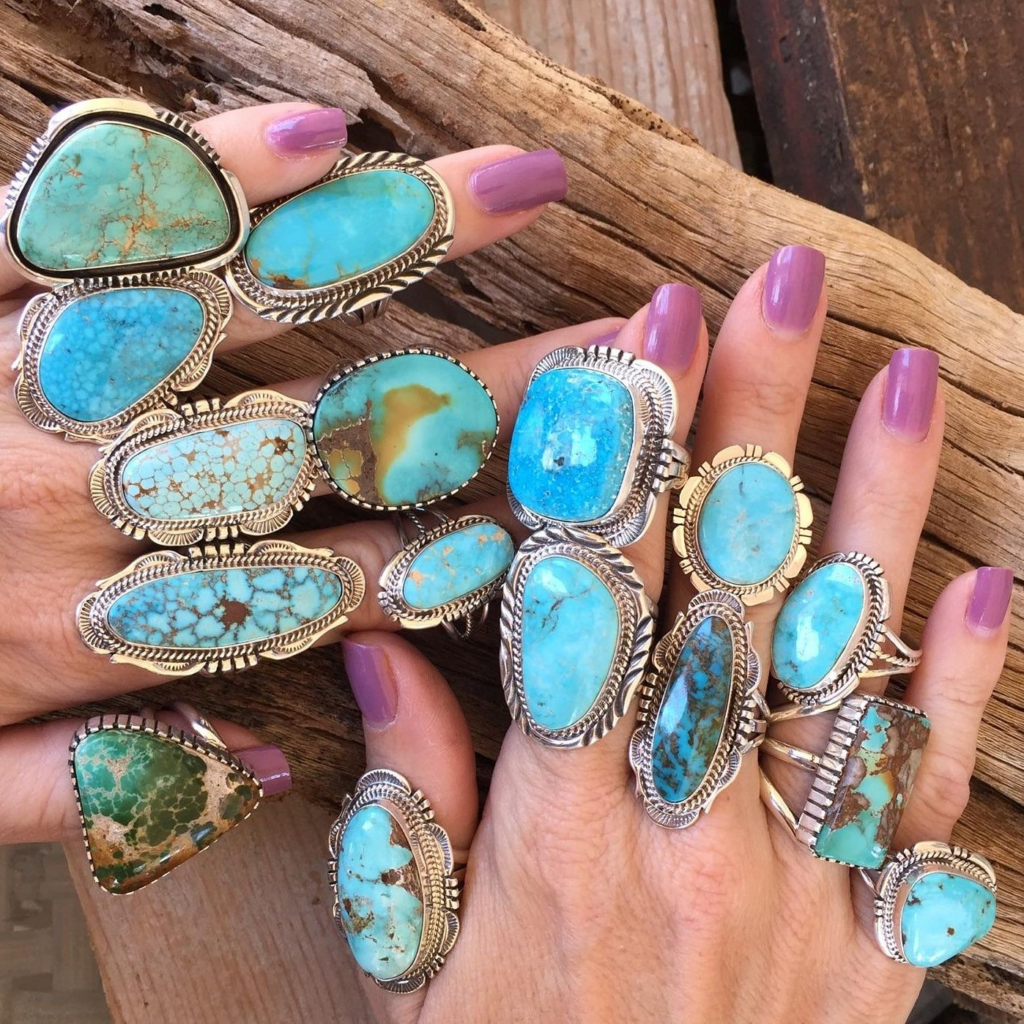
Source: Pinterest
Turquoise Types
Turquoise comes in so many colors, shades, shapes, and sizes. According to a place of origin, turquoise mines can come from areas like Arizona, Colorado, Nevada, and New Mexico. In terms of quality, there are three types of turquoise, that is, Gem Quality Turquoise, which is extremely rare and also fetches an extremely high price; Stabilized Turquoise, which consists of the majority of Turquoise sold on the market; Reconstructed Turquoise, which is the lowest form of turquoise. No matter what kind of turquoise you choose, be sure to select a reliable and refined jewelry manufacturer.
The colors turquoise range from different shades of blue to green. Some have a matrix, others don’t. Even the color and pattern of the matrix vary greatly. Let’s go over a few different types of turquoise that are well-known and that we deal with on a daily basis to help you identify them better.
Common Types of Turquoise:
Carico Lake Turquoise
The turquoise in Carico Lake ranges from beautiful shades of blue to lime green. The high levels of faustite and zinc cause the lime green color. Although blue turquoise is the most common, lime green has recently gained popularity due to its scarcity and unique color. The Carico Lake Turquoise Mine is a historic mine in Lander County, Nevada, named after its location on a dried-up lake bed.
Bisebee Turquoise
Bisbee was only actively mined in the Laender Pitt Copper mine for two years, from 1972 to 1974. The colors range from green to dark blue, with matrices in red, black, or brown. They are frequently referred to as “smoky Bisbee.” The texture is tough and extremely costly.
Stennich Turquoise
This turquoise, originally known as ‘Zuni Nuggets,’ is naturally hard and of high quality.
This Nevada mine produces unique shades of lime-green and blue turquoise. Stennich Turquoise is now extremely difficult to locate due to gold acquisitions covering portions of the mine.
Damele Turquoise
Damele only produces a small amount of this lovely yellow and green to soft grey stone. This mine has the most desirable bright lime green turquoise. The mine now produces mainly variscite, with the turquoise coming from older collections. Damele is therefore a highly sought-after turquoise.
Darling Darlene Turquoise
Darling Darlene Turquoise can be found in a variety of colors ranging from blue-green to light blue. The mine began as a small operation and later expanded into a gold mine, limiting the amount of this particular turquoise that reaches the market. The mine was named after the owner’s daughter, who died young when it first opened in the 1970s. Most Darling Darlene Turquoise is natural, which only adds to its overall rarity.
Dry Creek Turquoise
Dry Creek Turquoise is a highly sought-after, light-colored stone. The mine is said to have been discovered by Shoshone Indians. Dry Creek is a very hard, pale blue turquoise with a golden to deep brown matrix found at the Godber-Burnham mine in Lander County, Nevada. This stone should not be confused with or called “white buffalo.” Because this is the only known vein of this material, Dry Creek turquoise is precious.
Chinese Turquoise
During the 1970s when turquoise popularity spiked in the United States, Chinese turquoise importation rapidly increased due to the increasing price and decreasing supply of American turquoise. Because of lower labor costs, fewer environmental regulations, and an abundant supply, Chinese turquoise was significantly cheaper. As a result, Chinese turquoise gained a reputation as a low-cost, unattractive substitute for higher-quality but more expensive American turquoise.
Kingman Turquoise
Kingman Turquoise is a blue matrix turquoise industry standard. The mine became well-known for producing rare nuggets. Kingman Turquoise is now highly valued and sought after by collectors worldwide. It is one of the more well-known American turquoise. Stone hammers discovered in Mohave County, northwest of Kingman, AZ, indicate that Native Americans mined in Kingman as early as 600 B.C.E.
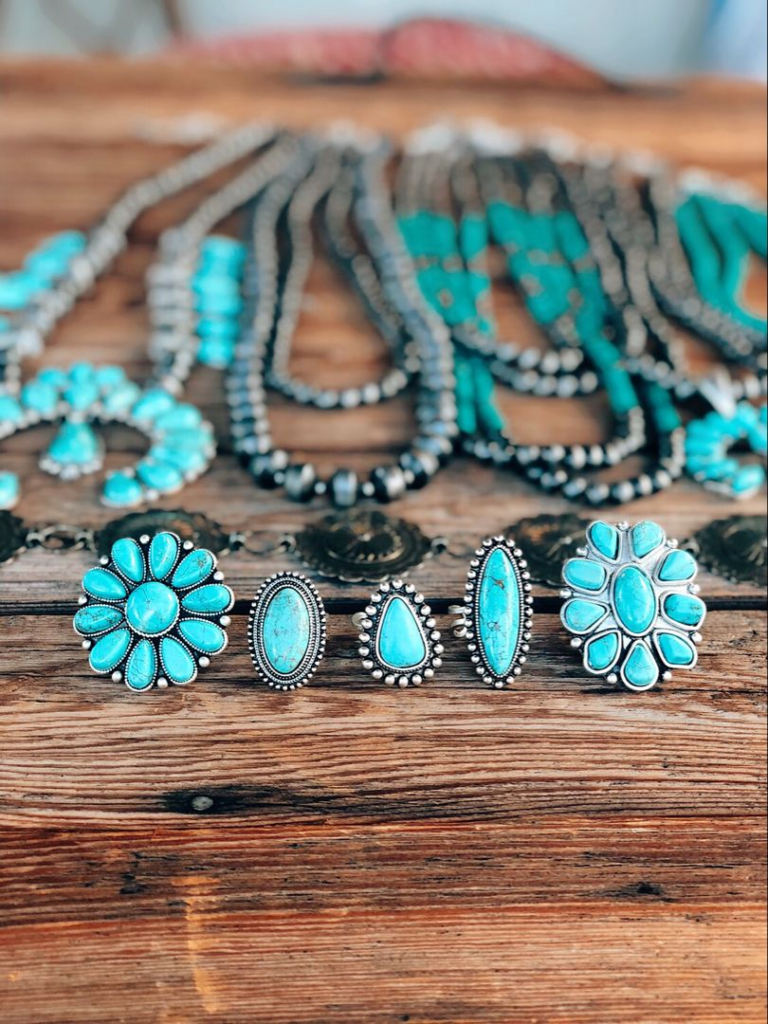
Source: Pinterest
Value & Price
Turquoise has been prized by cultures all over the world for over 5,000 years due to its striking sky-blue to blue-green colors. You may be interested in adding a slightly more expensive piece to your collection now that you have your crystal, gem, stone, and mineral collection up and running, but you should first learn about the value of this gemstone.
Depending on the quality, this gemstone costs between $0.05 and $1000 per carat. Authentic turquoise jewelry made from real turquoise is often expensive, but it is well worth the money. Genuine turquoise is difficult to find in stores and can cost up to $1000 per carat. Though genuine turquoise is quite valuable, people have created low-cost imitations of this gemstone, lowering its value. Aluminum phosphate and hydrated copper combine to form this gemstone. It is created when copper, phosphorus, aluminum, and water combine.
So how much is turquoise actually worth? That isn’t always an easy question to answer because each piece of turquoise is unique and thus has a different selling price. If you want to learn more about high-quality and low-quality turquoise, as well as how much a high-quality piece of turquoise might cost you, keep reading!
Indications
Rarity
The more valuable the turquoise stone, the higher its price. If, for example, a mine stopped producing a specific turquoise, the value of that particular gemstone mined from that location would rise. Sometimes turquoise is available in plastic, which is easily manufactured. Because such turquoise is widely available, it is less valuable than other, more difficult-to-find turquoise forms.
Color
Depending on the number of trace elements, the colors range from blue to blue-green to yellowish green. Blue is enhanced by copper. Green is added by chromium and vanadium. Yellow is added by iron. Rare blue-violet specimens with strontium impurities are available. Because of the high iron and vanadium content, US mines produce slightly greenish-blue to green gems in general.
Historically, and even today, the most sought-after stones are those with a fine robin’s egg or celestial blue color and no visible matrix. This color, also known as “Persian grade,” denotes the presence of little vanadium and no iron. This type of turquoise is still produced in Iran. The turquoise color is one of the more contentious indicators of stone value. The ancient Persians believed that the blue color of a robin’s egg was the most valuable; however, some modern collectors believe that the green colors are more valuable.
Size
This is a straightforward quality that is simple to assess and comprehend. Even if a large piece of turquoise weighs the same as several small pieces, it is typically worth slightly more per carat. This is because large contiguous pieces are more difficult to find in nature than small pieces. Again, it is a minor factor that rarely causes a significant price change.
Hardness
The hardness of a material is a measurable quality that indicates how easily it can be scratched. The harder the turquoise, naturally, the more valuable it is. The “Mohs Scale” is a scientific scale that measures hardness. Turquoise has the same hardness as glass on the scale. A Mohs scratch test can be used to determine the exact hardness of a material, but it will damage the stone you are attempting to measure.
Is turquosie worth any money? Turquoise is a precious stone that has long been used to create beautiful jewelry and other decorative items. It is one of today’s most popular gemstones, and its value has steadily increased over time. While there is no definitive answer as to how much turquoise is worth, if the turquoise means a lot to you, then it is priceless. In addition to the rarity, color and size, the intense blue color, low-porous fine texture, and absence of matrix are all important factors influencing the value of turquoise. Besides, if you are into a unique one, then remember to custom jewelry service.
Now that you have a basic understanding of turquoise jewelry, you must learn how to clean and store it. To clean your jewelry, first dampen a cloth with water, then wipe down the stone, and finally dry your jewelry with a clean cloth. Do remember: protect the jewelry from harsh cleaners; avoid using hand lotion when wearing turquoise; keep your jewelry dry; and clean your turquoise when it becomes dirty.
To protect the stone from scratches, place each piece of turquoise in a pouch and wrap it in a cotton cloth or the original box that it came in. It will also help to prevent turquoise from scratching precious metals and softer stones. Investing in jewelry boxes with individually padded spaces to prevent scratches and damage is also a good idea.

Source: Pinterest
Common Styling Solutions
Maxi Dress
A maxi dress is flattering if you choose a style that emphasizes your curves and figure while hiding any flaws. Maxi dresses with perfect turquoise jewelry can draw the eye vertically rather than horizontally.
Colors to Wear
Despite the stone’s boldness, turquoise jewelry is surprisingly versatile. We love a pop of color and believe that you don’t have to be daring to add interest to your outfits. To add some contrast, pair a subtle piece of turquoise with a blush or rusty red top. Alternatively, wear it over something naked or tanned. If you want to look more modern, layer your turquoise jewelry over that cute white top you have in your closet with a pair of jeans-you know the look we’re talking about. But don’t worry; if you like bright colors, turquoise jewelry can easily compete with your bold favorites.
Boho Style
Yes, turquoise jewelry is quite adaptable. However, boho and turquoise were made for each other. The laid-back vibes of boho pair perfectly with the vibrant hues of turquoise. That is simply the truth. Isn’t it fun? But be careful not to overdo it with your outfit. Simply choose your favorite pair of skinny jeans, leather fringed boots, and a cute top to avoid accidentally turning your casual look into a costume. Don’t be afraid; you’ve got this.
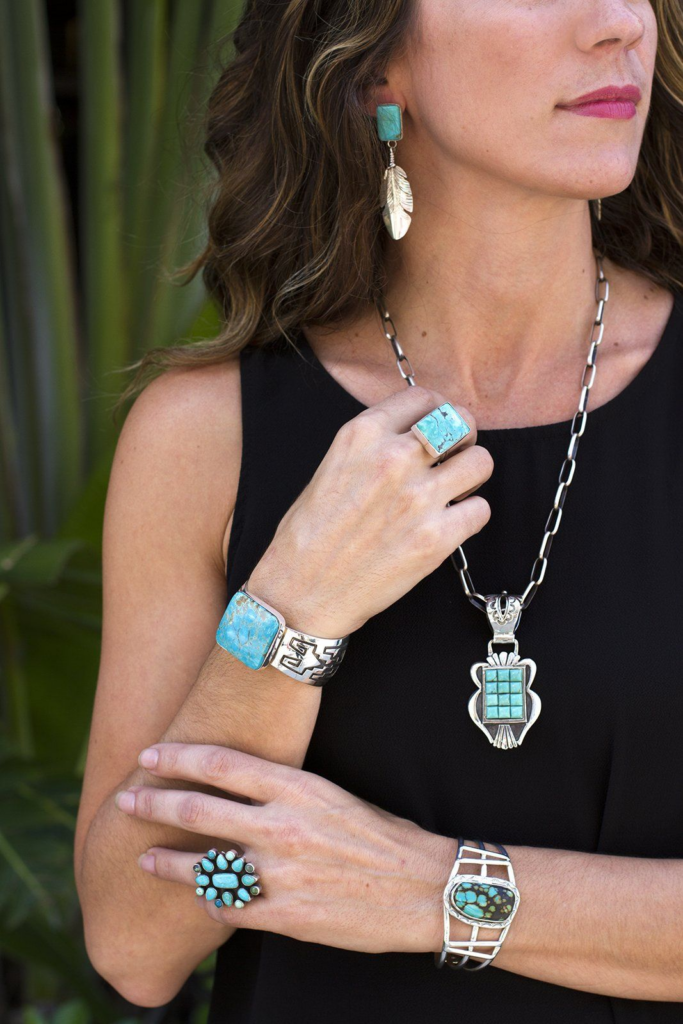
Source: Pinterest
Key Takeaway
When selecting turquoise jewelry, it is critical to consider the gemstone’s quality. Turquoise is graded on a scale of 1 to 5, with 1 being the worst and 5 being the best. Once you’ve decided on a turquoise color, you can start looking at different pieces of jewelry to find the perfect one for you.


